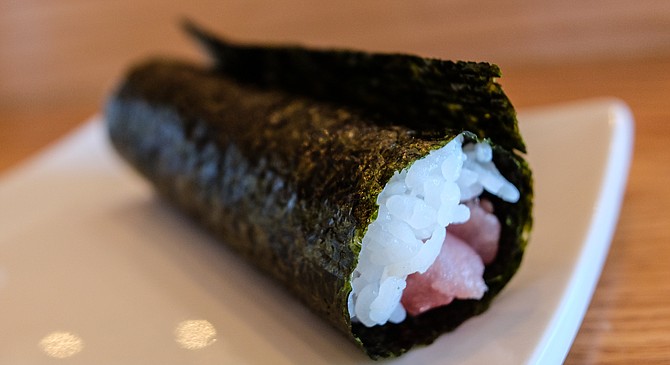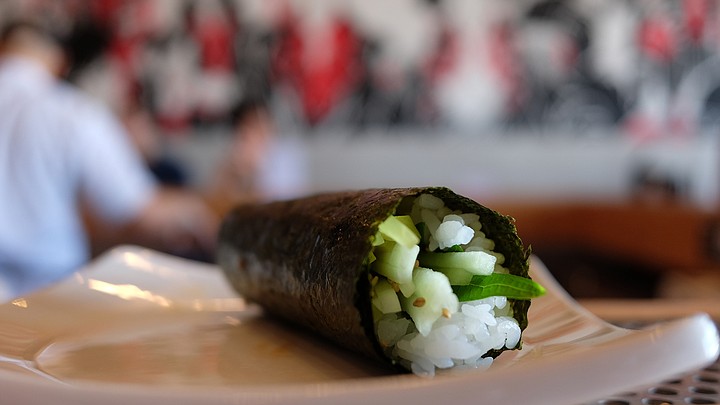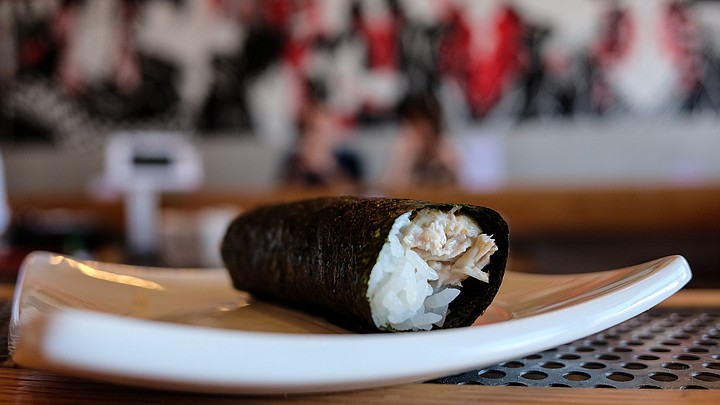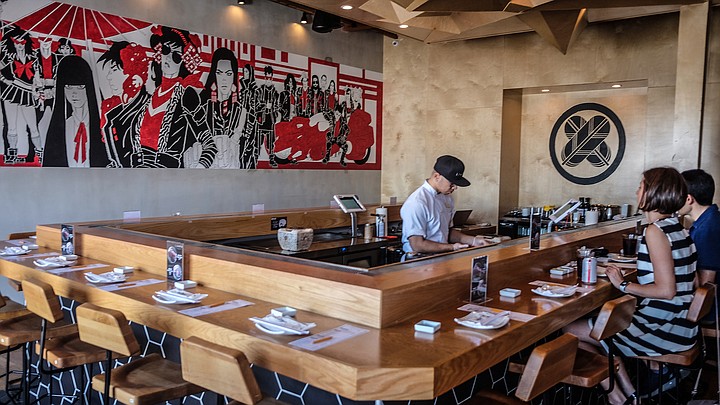 Facebook
Facebook
 X
X
 Instagram
Instagram
 TikTok
TikTok
 Youtube
Youtube

The next sushi trend to conquer America could be something way simpler than we’re used to: the dedicated hand roll bar.
To many, the sushi means sushi rolls, a.k.a. maki, wherein fish, rice, and sheets of nori seaweed are rolled into airtight tubes, then sliced into bite size wafers that are easy to dip and share. Most famous would be the California roll, a mix of crab, cucumber, and avocado.

Decades ago, that was conceived as a clever, North American twist to traditional maki preparations, but today it’s considered boring; a starter roll for the sushi novice. Now, virtually every sushi restaurant offers a litany of elaborate “special rolls,” creative maki stuffed with multiple kinds of fish.

To the chagrin of my friends and family, I tend to skip these in favor hand rolls, or temaki. Neither sliced nor intended to be shared, these loosely rolled maki, are usually cone shaped, and filled with a single type of fish, rice, and maybe sauce plus a vegetable or two. A couple of hand rolls typically cost less than a special roll, and I appreciate the simplicity.

A couple years ago, I got to visit KazuNori, an L.A.l temaki bar claiming to be “the first restaurant of its kind.” Inside a wraparound bar, a couple of very active sushi chefs prepared one hand roll after another — no cut rolls or nigiri. They were not preparing cones, but slender tubes, each the size of a fat cigar, with freshly toasted seaweed wrapped around warm rice and minced fish.
The key was freshness. Tasting menus offered fixed courses ranging from three to five rolls apiece, but the temaki come out one at a time, meant to be eaten immediately, so the nori remained crisp, the rice warm, and the fish cool. When the chef noticed you’d finished one roll, you would get another.
Here in San Diego, J/Wata Temaki Bar soft-opened on Convoy Street in May, closely replicating the KazuNori model (as have bars in New York and Chicago). J/Wata occupies the same strip mall as sister restaurant Pokirrito, which begs the question: are these temaki different enough from Pokirrito’s sushi burritos to warrant a separate restaurant? A thousand percent yes.
I started with the $13, three-course San menu: negi toro, spicy salmon, and blue crab rolls. I watched the chef toast the nori over an open flame, then quickly fashion a roll that he handed to me immediately. The longest step in the entire process was my slowly chewing to linger on the terrific combination of flavors and textures. Fatty bluefin tuna with sesame, then lightly spiced salmon, then tender, shredded crab.
Following the fixed menu, I tried one of several vegetarian temaki from the a la carte menu, called takuwan shiso. The takuwan is Japan’s version of pickled daikon radish, rolled here with julienned cucumber and an aromatic shiso leaf in this $3.75 roll. Despite following all that glorious fish, this veggie roll held its own, the sweetness of the daikon playing well off the simultaneously mint-, basil-, and cilantro-like shiso.
That might be the most complex temaki of the bunch. Compared to Pokirrito’s sushi burritos, it’s tempting to relate these as sushi street tacos, and there are similarities both in their simplicity, construction, and immediacy. But there’s nothing street about these temaki. They offer a specialized sushi experience, more mindful of ingredients than any sushi burrito. And unlike most taco shops, I could easily spend 30 bucks in one J/Wata sitting, and crave more.


The next sushi trend to conquer America could be something way simpler than we’re used to: the dedicated hand roll bar.
To many, the sushi means sushi rolls, a.k.a. maki, wherein fish, rice, and sheets of nori seaweed are rolled into airtight tubes, then sliced into bite size wafers that are easy to dip and share. Most famous would be the California roll, a mix of crab, cucumber, and avocado.

Decades ago, that was conceived as a clever, North American twist to traditional maki preparations, but today it’s considered boring; a starter roll for the sushi novice. Now, virtually every sushi restaurant offers a litany of elaborate “special rolls,” creative maki stuffed with multiple kinds of fish.

To the chagrin of my friends and family, I tend to skip these in favor hand rolls, or temaki. Neither sliced nor intended to be shared, these loosely rolled maki, are usually cone shaped, and filled with a single type of fish, rice, and maybe sauce plus a vegetable or two. A couple of hand rolls typically cost less than a special roll, and I appreciate the simplicity.

A couple years ago, I got to visit KazuNori, an L.A.l temaki bar claiming to be “the first restaurant of its kind.” Inside a wraparound bar, a couple of very active sushi chefs prepared one hand roll after another — no cut rolls or nigiri. They were not preparing cones, but slender tubes, each the size of a fat cigar, with freshly toasted seaweed wrapped around warm rice and minced fish.
The key was freshness. Tasting menus offered fixed courses ranging from three to five rolls apiece, but the temaki come out one at a time, meant to be eaten immediately, so the nori remained crisp, the rice warm, and the fish cool. When the chef noticed you’d finished one roll, you would get another.
Here in San Diego, J/Wata Temaki Bar soft-opened on Convoy Street in May, closely replicating the KazuNori model (as have bars in New York and Chicago). J/Wata occupies the same strip mall as sister restaurant Pokirrito, which begs the question: are these temaki different enough from Pokirrito’s sushi burritos to warrant a separate restaurant? A thousand percent yes.
I started with the $13, three-course San menu: negi toro, spicy salmon, and blue crab rolls. I watched the chef toast the nori over an open flame, then quickly fashion a roll that he handed to me immediately. The longest step in the entire process was my slowly chewing to linger on the terrific combination of flavors and textures. Fatty bluefin tuna with sesame, then lightly spiced salmon, then tender, shredded crab.
Following the fixed menu, I tried one of several vegetarian temaki from the a la carte menu, called takuwan shiso. The takuwan is Japan’s version of pickled daikon radish, rolled here with julienned cucumber and an aromatic shiso leaf in this $3.75 roll. Despite following all that glorious fish, this veggie roll held its own, the sweetness of the daikon playing well off the simultaneously mint-, basil-, and cilantro-like shiso.
That might be the most complex temaki of the bunch. Compared to Pokirrito’s sushi burritos, it’s tempting to relate these as sushi street tacos, and there are similarities both in their simplicity, construction, and immediacy. But there’s nothing street about these temaki. They offer a specialized sushi experience, more mindful of ingredients than any sushi burrito. And unlike most taco shops, I could easily spend 30 bucks in one J/Wata sitting, and crave more.
Comments